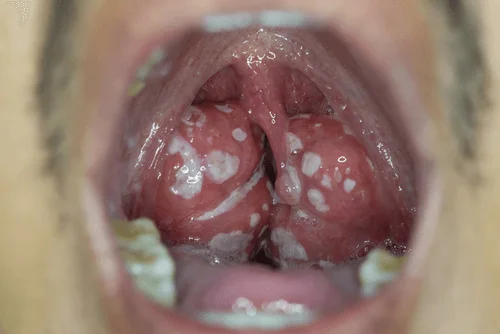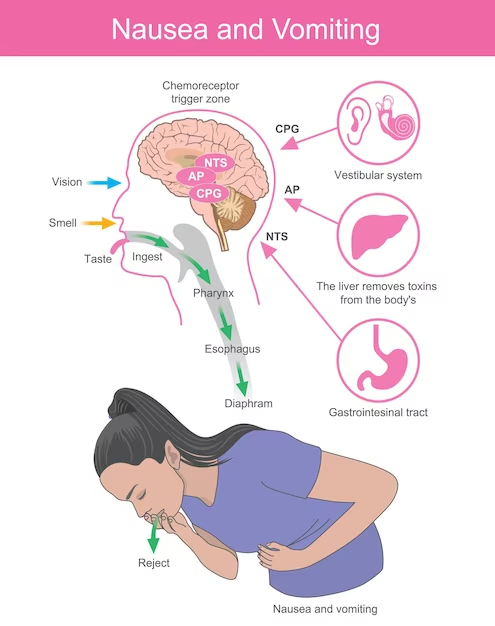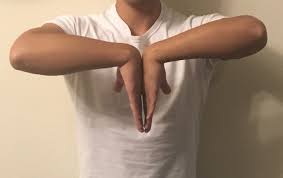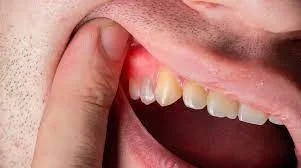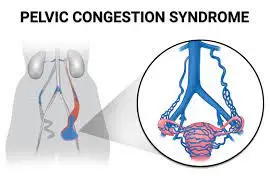Tonsil Stones
Table of Contents
Introduction
Small lumps that progress in your tonsils are known as tonsilloliths or tonsil stones. Bad breath is the primary sign of tonsil stones. Methods for tonsil stone removal at home involve using a saltwater gargle or a water pick. If the tonsil stones are coming back or bothering you, your distributor could recommend surgery.
What are tonsil stones?
Tonsil stones are small, hard lumps that develop within the tonsils. Tonsil stones can create bad breath however they’re normally not painful or harmful. They’re also called tonsilliths.
You can normally treat tonsil stones at home. But in some cases, you could require surgery to remove the tonsils.
What are tonsils?
The back of your throat has a pair of tiny, oval-shaped tissue growths called tonsils. They have folds, cracks, and crevices called tonsillar crypts.
Tonsils are part of your immune system, which assists in protecting against infection. Tonsils filter bacteria and viruses that penetrate your body through your mouth. Removing the tonsils does not attack your immune system.
What do tonsil stones look like?
Tonsil stones stare like little white or yellow pebbles on your tonsils. You could have one tonsil stone or many tonsil stones. They’re usually small, though sometimes people can make large tonsil stones.
Who’s at risk of tonsil stones?
People who have more tonsillar crypts tend to make more tonsil stones. These are also more commonly developed in people who have had a lot of tonsil infections in their lives. Tonsilliths tend to happen more frequently in teens.
How common are tonsil stones?
Tonsil stones are usual. Many people make them and do not even know they have them.
What causes tonsil stones?
Materials and debris can be trapped in the tonsillar crypts. The material can harden or calcify, making stones. Trapped material could involve:
- Minerals such as calcium.
- Food or debris.
- Bacteria or fungi.
The exact method that tonsil stones form is not completely understood. They are known to be composed of a substance termed biofilm, which is a microbial assemblage on a surface.
In the mouth, biofilm is a combination of your own mouth’s bacteria and fungi related to your mouth’s chemistry. Then, this combination defends any moist surface.
In the case of tonsil stones, the material develops into a hardened within the tonsils. Another usual biofilm in the mouth is plaque.
Factors that may contribute to the formation of tonsil stones involve:
- poor dental hygiene.
- large tonsils.
- chronic sinus problem.
- chronic tonsillitis. (inflamed tonsils)
What are the symptoms of tonsil stones?
Some tonsil stones don’t create any symptoms. If you do have symptoms, they could involve:
- Bad breath (halitosis). A primary sign of a tonsil stone is severely bad breath, or halitosis, that comes along with a tonsil infection. One study of patients with a form of long-term tonsillitis tested their breath for things called volatile sulfur compounds, which can mean bad breath. The researchers discovered that tonsil stones were present in 75% of those with exceptionally high levels of these chemicals.
- Sore throat. When you make tonsil stones and tonsillitis together, it could be hard to figure out which is causing pain in your throat. The tonsil stone itself muscle gives you pain or discomfort.
- Cough. A stone might irritate your throat and cause you to cough.
- White debris. You muscle be able to see a tonsil stone in the back of your throat as a lump of solid white material.
- Trouble swallowing. Depending on the location or size of the tonsil stone, it could be hard or painful to swallow food or liquids.
- Ear pain. Tonsil stones can grow anywhere in your tonsil. Because of shared nerve pathways, your muscles feel pain in your ear, even though the stone itself isn’t touching your ear.
- Tonsil swelling. When debris hardens and a tonsil stone forms, inflammation, infection, and the tonsil stone itself may create your tonsil swell.
How are tonsil stones diagnosed?
To investigate tonsil stones, your provider may:
- Take a physical examination, paying attention to your neck and mouth.
- Perform an imaging scan if they cannot observe the stones easily.
- Remove the stones using a dental pick.
Sometimes, a healthcare distributor happens to notice tonsil stones during an exam. If you don’t have any symptoms, your provider might notice a stone during a scan or X-ray for a different issue. Or your dentist could observe them during a dental exam.
What are the complications of tonsil stones?
While rare, you may grow complications from tonsil stones. For example, the rise of bacteria within the stones can create halitosis or bad breath and may also cause tooth decay.
Large tonsil stones can also damage and disturb typical tonsil tissue. Significant swelling, inflammation, and infection may result from this.
Tonsil stones linked to tonsil infections could also need surgery.
How are tonsil stones treated?
Tonsil stones are not a health risk and frequently go away on their own.
There is no specific treatment for tonsil stones, but you can control any symptoms they cause, such as bad breath.
Good oral care is crucial. This involves:
- gargling with warm salt water.
- brushing your teeth regularly.
- managing any allergies that cause raised nasal mucus.
- coughing to loosen the stones.
- During vigorous gargling, the tonsil stones could become detached.
Do NOT try to remove stones with a water jet or manually with a finger or dental swab. You can risk damage to your tonsils and problems such as infection, bleeding, or choking.
Can I remove the tonsil stones myself?
You can try these at-home techniques to get rid of tonsil stones:
- Gargling: Vigorous gargling applying salt water has a few advantages. It helps your throat feel better, plus it can remove the tonsil stones. It might even eliminate the offensive smell. This is particularly kind when you gargle after eating to avoid food and debris from getting caught in the tonsil crypts.
- Coughing: Some people get that a strong cough can loosen stones and bring them up.
- Using an object: If gargling and coughing don’t remove the stones, it’s tempting to use your finger or a toothbrush to get rid of tonsil stones. But you can easily scratch your gentle tonsils. They can become infected. Instead, if you want to apply an object, try a cotton swab.
How can I prevent tonsil stones?
While poor oral hygiene is not the only reason tonsil stones progress, keeping your mouth clean and free of any food particles or bacteria plays an important role in preventing tonsil stones from exposing up. Be positive to:
- Brush and floss your teeth frequently. Keeping your mouth clean and removing food particles can play an important role in preventing tonsil stones from growing by reducing the amount of materials and bacteria in your mouth that could contribute to tonsil stone growth. Brush your teeth after feeding, as fine as in the morning after you wake up and before bed. Floss daily.
- Gargle water. In addition to regularly cleaning your teeth and flossing, Setlur advises gargling water at the back of your throat after meals to help remove food particles and debris and prevent the buildup of debris that might cause tonsil stones. Avoid gargling with mouthwashes that contain alcohol, which may cause irritation and show swelling in the area in which the tonsil stones happen. Gargling with salt water could provide additional benefits by assisting in reducing any swelling in the area and preventing the collection of food or other materials, Kezirian says.
Lifestyle choices can affect tonsil stone formation, too. To assist in preventing stones you can also:
- Stop smoking. Anything that produces inflammation in the mouth or throat, such as smoking, can irritate the tonsils, which can set the stage for the worsening of crypts and raise the risk of tonsil stones.
- Avoid sugary drinks. Steer clear of beverages that are high in sugar, such as juice and sodas, as they could act as a nutrient source for bacteria, helping it collect in the tonsils, Kezirian says.
What medical attention should I get if I have tonsil stones?
Here are some at-home remedies for removing tonsil stones removal:
A warm saltwater gargle assists with swelling and discomfort. Gargling can even help remove the stone. Try gargling with 8 ounces of water and 1 teaspoon of salt.
- Apply a cotton swab to remove a tonsil stone that’s bothering you.
- Brush and floss regularly.
When should I get tonsil stones checked out by a doctor?
Consult your service provider if:
- At-home remedies aren’t working as they must.
- Your tonsils are troubling you or recurring stones.
- You want to discuss other treatment choices.
What are the prevention of tonsil stones?
People who have long-term tonsillitis are more likely to make tonsil stones. The only method to prevent them is to remove your tonsils.
- Good dental habits can assist in preventing tonsil stones.
- Brush and floss your teeth regularly to remove bacteria and prevent things from getting stuck in your tonsils.
- Gargling and then eating can also prevent food collection.
Summary
While tonsil stones are usually a minor irritation, they sometimes direct to infection and discomfort. People can frequently resolve them at home with strategies such as salt water gargling, coughing, and using a cotton swab or toothbrush. If tonsil stones persist or create painful symptoms, a person should contact a doctor.
The Bottom Line
Tonsil stones are a generally non-threatening collection of bacteria and debris in the crevices of your tonsils. Smaller ones could not create symptoms, but larger ones may cause bad breath or a sore throat.
You may be able to remove them at home with solutions such as a saltwater gargle, coughing, or applying a water pick. If you can’t remove them yourself and create discomfort, you can talk to a doctor for other removal options.
FAQs
Are tonsil stones serious?
Tonsil stones are mostly not serious. They can create a sore throat and bad smell if they are large but do not typically create worsening symptoms.
How do tonsil stones start?
Your tonsils are filled with nooks and crannies where bacteria and other things, involving dead cells and mucus, can be trapped. When this occurs, the debris can bond together. Tonsil stones form when this debris hardens or clarifies.
Are tonsil stones contagious?
Tonsil stones are not infections. The debris that is acquired in the tonsils can trap microbes. However, the debris hardens, avoiding spread.
How can I remove the tonsil stones I have?
The safest way to remove stones yourself is by using a water pick on the lowest setting. Spray a thin stream of water onto the tonsil. You can also apply your fingertip or a cotton swab to gently loosen and remove a stone. Avoid using a sharp object, which can tear the tissue and create bleeding.
Why do people get tonsil stones?
The glands contain folds studied as tonsillar crypts (folds). If your tonsillar crypts are enlarged, minerals such as calcium can become trapped, and clarify (harden) into stones. Bacteria or fungi that create tonsillitis can also cause tonsil stones to form.
Which foods cause tonsil stones?
This can involve avoiding certain foods, such as dairy products or sugary snacks, that can contribute to the formation of tonsil stones. You could also be required to use a nasal spray or other medication to manage post-nasal drip or acid reflux.
Can tonsil stones heal naturally?
While tonsil stones are usually a minor irritation, they sometimes usher to infection and discomfort. People can often resolve them at home with approaches such as salt water gargling, coughing, and using a cotton swab or toothbrush. If tonsil stones persist or create painful symptoms, a person must contact a doctor.
Does mouthwash remove tonsil stones?
Rinse regularly using a mouthwash, gently swishing alcohol-free mouthwash around your mouth to assist in killing bacteria and loosen tonsil stones. Brushing or scraping your tongue regularly will keep it clean. Avoid smoking or utilizing any tobacco products.
Is tonsil stone removal painful?
Only a part of the tonsil stone is removed with home treatment. Your tonsils grow red, swollen, and painful. After having the tonsil stone removed at home, you feel pain.
What deficiency causes tonsil stones?
Vitamin D deficiency causes a rise in VEGF expression in the tonsillar tissue which plays a part in the pathogenesis of recurrent/chronic tonsillitis.
How do you check for tonsil stones?
According to your health report and a physical examination of the tonsils, the diagnosis of tonsil stones is typically easy to make, according to Dr. Stewart. To find “hidden” tonsil stones, X-rays (CT or plain films) may occasionally be necessary. You don’t need to get treatment if you have tonsil stones that aren’t bothering you.
How do they remove a hidden tonsil stone?
An otolaryngologist (ear, nose, and throat doctor) or a dentist commonly removes tonsil stones. Your tonsil stones may occasionally be removed by a general practitioner. Never attempt to remove a tonsil stone by yourself. A stone may only become further embedded in the tissues if you use a Waterpik.
How can you prevent tonsil stones?
If you have tonsil stones, they could happen on a regular basis. However, you are able to take steps to prevent them, such as:
practicing good oral hygiene involves cleaning the bacteria off the back of your tongue when you brush your teeth.
Avoid smoking if you smoke.
gargling with salt water.
drinking many of water to stay hydrated.
How can I prevent tonsil stones daily?
This is the best method to prevent tonsil stones from forming. Be sure to brush your teeth and tongue in the morning, before bed, and after every snack. In addition, you must floss every day. This helps keep debris from improving.
References
- Professional, C. C. M. (n.d.). Tonsil Stones. Cleveland Clinic. https://my.clevelandclinic.org/health/diseases/21505-tonsil-stones.
- Image Before you continue. (n.d.). https://www.google.com/search?q=image+of+tonsil+stones&sca_esv=571229774&rlz=1C1YTUH_enIN1075IN1075&tbm=isch&source=lnms&sa=X&ved=2ahUKEwjMnNyZiOGBAxV
- Parker, H. (2008, July 21). Tonsil Stones (Tonsilloliths). WebMD. https://www.webmd.com/oral-health/tonsil-stones-tonsilloliths-treatment-and-prevention.
- Gotter, A. (2022, October 24). Tonsil Stones (Tonsilloliths): What They Are & How to Get Rid of Them. Healthline. https://www.healthline.com/health/dental-and-oral-health/tonsil-stones.
- Lee, K. (2022, December 27). What Are Tonsil Stones? Symptoms, Causes, Diagnosis, Treatment, and Prevention. EverydayHealth.com. https://www.everydayhealth.com/tonsil-stones/.
- What you should know about tonsil stones. (2023, April 3). https://www.medicalnewstoday.com/articles/315026.

